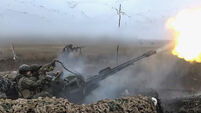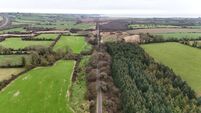Opportunity knocks as rover sends first Mars photos
The pictures showed a surface smooth and dark red in some places, and strewn with fragmented slabs of light bedrock in others. Bounce marks apparently left by the rover's air bags when it landed were clearly visible.
"I am flabbergasted. I am astonished. I am blown away. Opportunity has touched down in an alien and bizarre landscape," Steven Squyres, the mission's main scientist, said early yesterday. "I still don't know what we're looking at."
NASA began receiving the first of dozens of black-and-white and colour images from Opportunity about four hours after its apparently flawless landing. Mars at the time was 124 million miles from Earth.
Mission members hooted and hollered as the images splashed on a screen in mission control at NASA's Jet Propulsion Laboratory in Pasadena. Governor Arnold Schwarzenegger was there with his wife, Maria Shriver, to watch the drama unfold, and walked through mission control shaking hands.
Swaddled in protective air bags, Opportunity plunged into the Martian atmosphere at more than 12,000mph and bounced down on Mars at a force estimated to be just two to three times that of Earth's gravity. Engineers had designed it to withstand as much as 40 G's, said Chris Jones, director of flight projects at JPL.
The six-wheeled rover landed at 12.05am EST in Meridiani Planum, believed to be the smoothest, flattest region on Mars. It lies 6,600 miles and halfway around the planet from where Opportunity's twin, Spirit, landed on January 3.
Initial analysis of the images suggested Opportunity landed in a shallow crater. Its low rim shouldn't block the rolling robot once it gets going, Squyres said. Together, the twin 384-pound rovers make up a $820 million mission to seek out geologic evidence that Mars was a wetter world possibly capable of sustaining life. NASA launched Spirit on June 10 and Opportunity on July 7. Each carries nine cameras and six scientific instruments.












